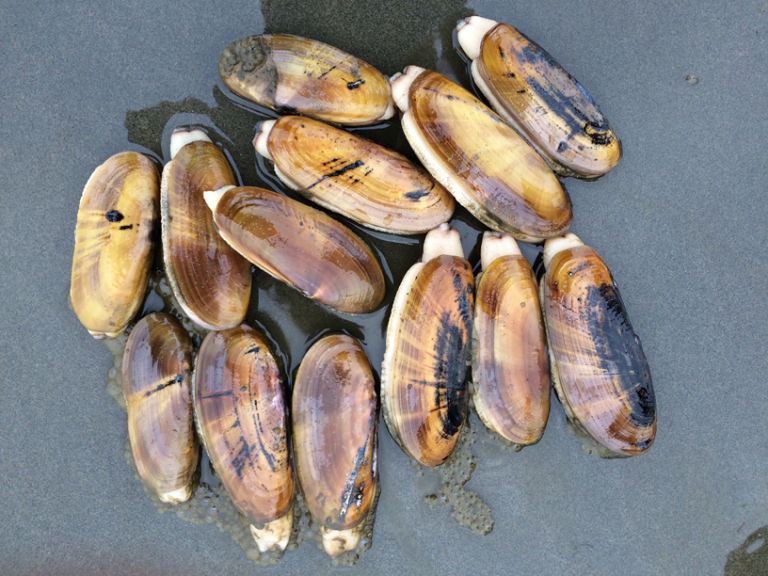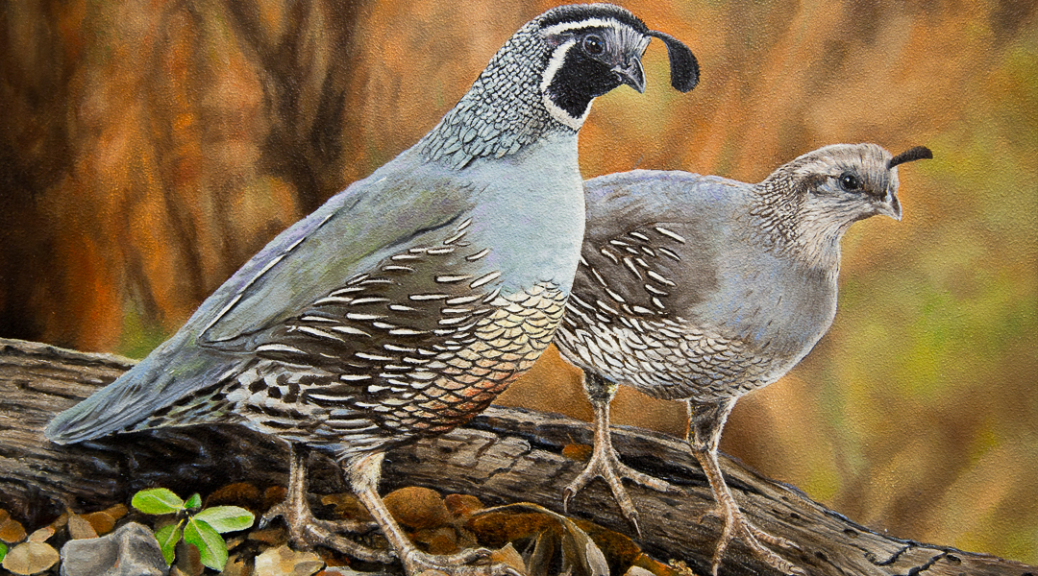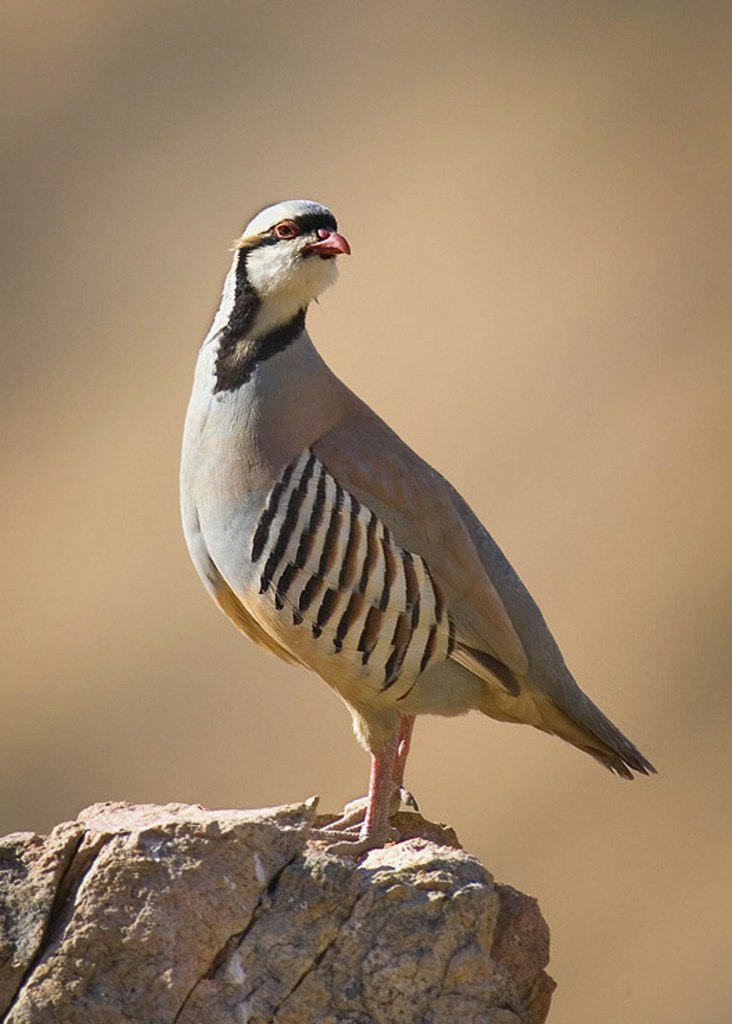What’s the Scoop on Razor Clams?

by Carrie Wilson
8-25-2017
Website
Question: I have looked at the regulations for clams and I cannot find a size limit for razor clams. I see the 1-1/2 inch limit for littlenecks, cockles and steamers, but under razor clams there is no size limit given. Do they have a size limit?
I am also very interested in finding more places to clam in Tomales Bay. I know there are no razor clams in Tomales Bay but there sure seems to be a lot of clamming going on there. Do you have any resources that provide specific information on clamming inside the Bay? (Peter C.)
Answer: There is no size limit for razor clams, so the first 20 you dig you should keep regardless of size, especially if their delicate shell has been crushed.
According to California Department of Fish and Wildife (CDFW) Environmental Scientist Christy Juhasz, who works on California’s recreational clam fisheries, razor clams are generally found on open coast, sandy beaches and are more of a coldwater regime species. In fact, California is the southern extent of their geographic range. Because of this, they are not typically found in the warmer and siltier mudflats of inner Tomales Bay.
Recreational razor clamming is popular in the more northern California counties of Del Norte and Humboldt. Since this area constitutes more of their expected home range, clams in this area are potentially more productive but, unfortunately, the fishery has been closed since 2016 due to continued high domoic acid levels (see wildlife.ca.gov/Fishing/Ocean/Health-Advisories).
The fishery is open south of these counties and Juhasz suggests checking out Dillon and Doran beaches in Marin and Sonoma counties, respectively. You may find some available clamming grounds at low tide. Some local clammers have reported though that they have not been able to find razors at their clamming grounds on Doran Beach in recent years. This may be due to the fact that it is the southern region of their range so populations that exist there may not be as productive for a variety of factors (e.g. low recruitment and high fishing pressure.)
Clam and Seal islands in Tomales are popular clamming grounds where most people clam for horseneck/gaper clams and Washington/butter clams. To find these clamming grounds, look for the exposed mudflat areas during low tide just outside of Lawson’s Landing. There is no size limit for these species but the first 10 of each species that you dig, you should keep.
Rock pigeons
Question: While out dove hunting, for years I have also been shooting rock pigeons. People call them by different names like park pigeons, barn pigeons and domestic pigeons, but I am pretty sure they are all the same. Recently, I was told that they are illegal to shoot, but why when there are tons of them, and they taste pretty good, too. Is it legal for me to shoot them, and if so, do I have to use nonlead ammunition? (Mr. Squab)
Answer: According to CDFW Senior Environmental Scientist Karen Fothergill, you are correct that the rock pigeon is also being called by all those other names, but as of July 1, 2017, they are now legal to hunt. Prior to that date there was no regulation specifically allowing for take. The law requires that in order to hunt a particular species, there must be specific laws stating when, how many and method of take. Rock pigeons have been added to the CCR Title 14, section 472 along with starlings and house sparrows. They are classified as a non-game bird and a valid hunting license is required to hunt them. Hunting rock pigeons also requires the use of nonlead ammunition.
Helping grandsons to fish with a two pole license?
Question: If I take my two grandsons fishing, would I be able to fish also if I have a second rod stamp validation? The kids are seven and five years old and would need help from me to fish. (Barry W.)
Answer: You would be able to fish with your two poles as long as you are just assisting your grandsons and not controlling the rod or reeling the fish in for them on your own. You also have to ensure that you are able to closely attend your own two poles. We thank you for taking the time to introduce your grandsons to fishing. We’re pretty sure they will thank you too someday!
Is an abalone gauge/iron combo legal?
Question: When diving for abalone, am I required to carry both a measuring gauge and an abalone iron or can I use a combo device that meets the requirements of both? The dive shop told me they had to be separate tools. (Joon P.)
Answer: Combination devices with fixed (non-moving) opposing arms, capable of measuring abalone accurately that also comply with the requirements for ab irons are legal to use. (See subdivisions (e) and (f) of CCR Title 14, section 29.15.)
Carrie Wilson is a marine environmental scientist with the California Department of Fish and Wildlife. While she cannot personally answer everyone’s questions, she will select a few to answer each week in this column. Please contact her at CalOutdoors@wildlife.ca.gov.
More Reports

8-20-2017
The California Department of Fish and Wildlife (CDFW) is conducting an art contest to select the design for the state’s...... Read More

8-17-2017
Question: The ban on hunting with lead ammunition is being phased in. It now includes chukar, while the use of lead...... Read More
